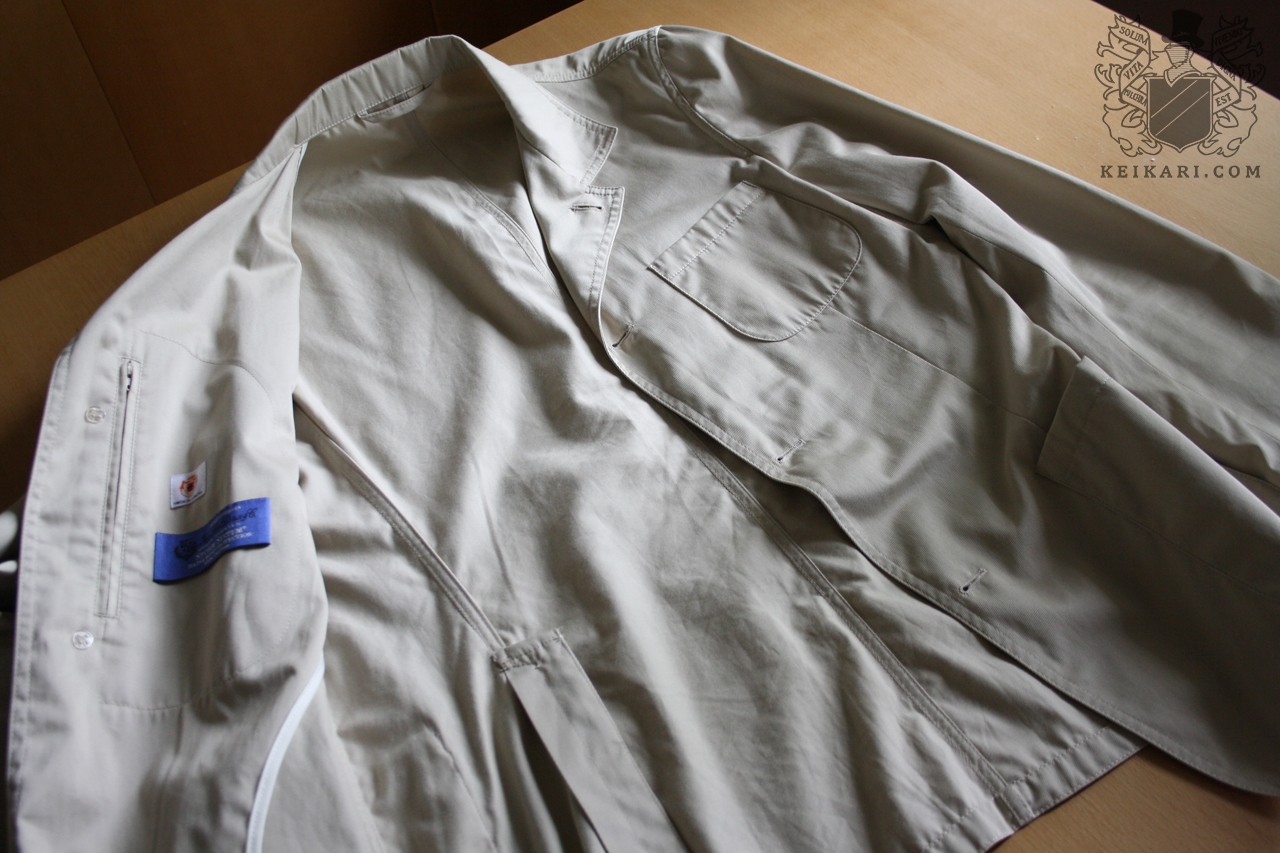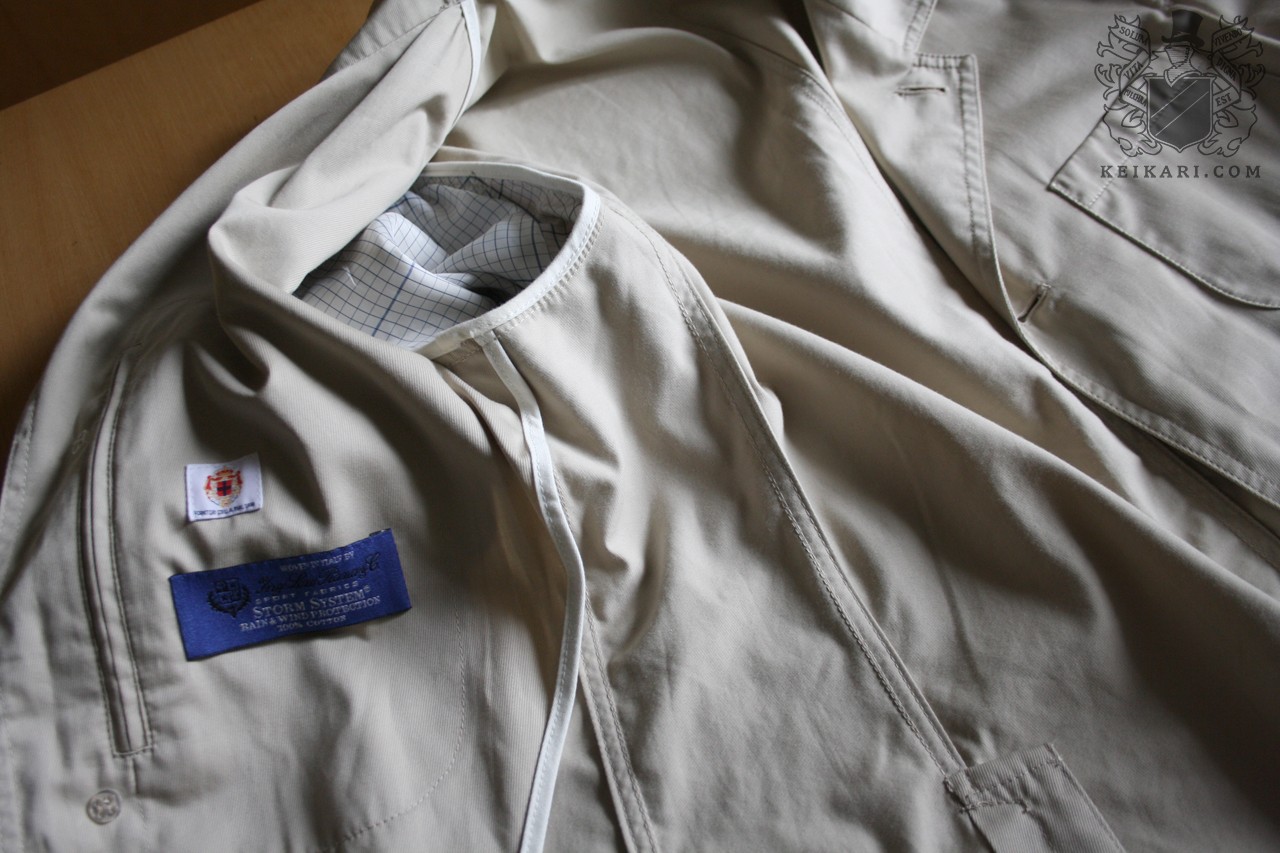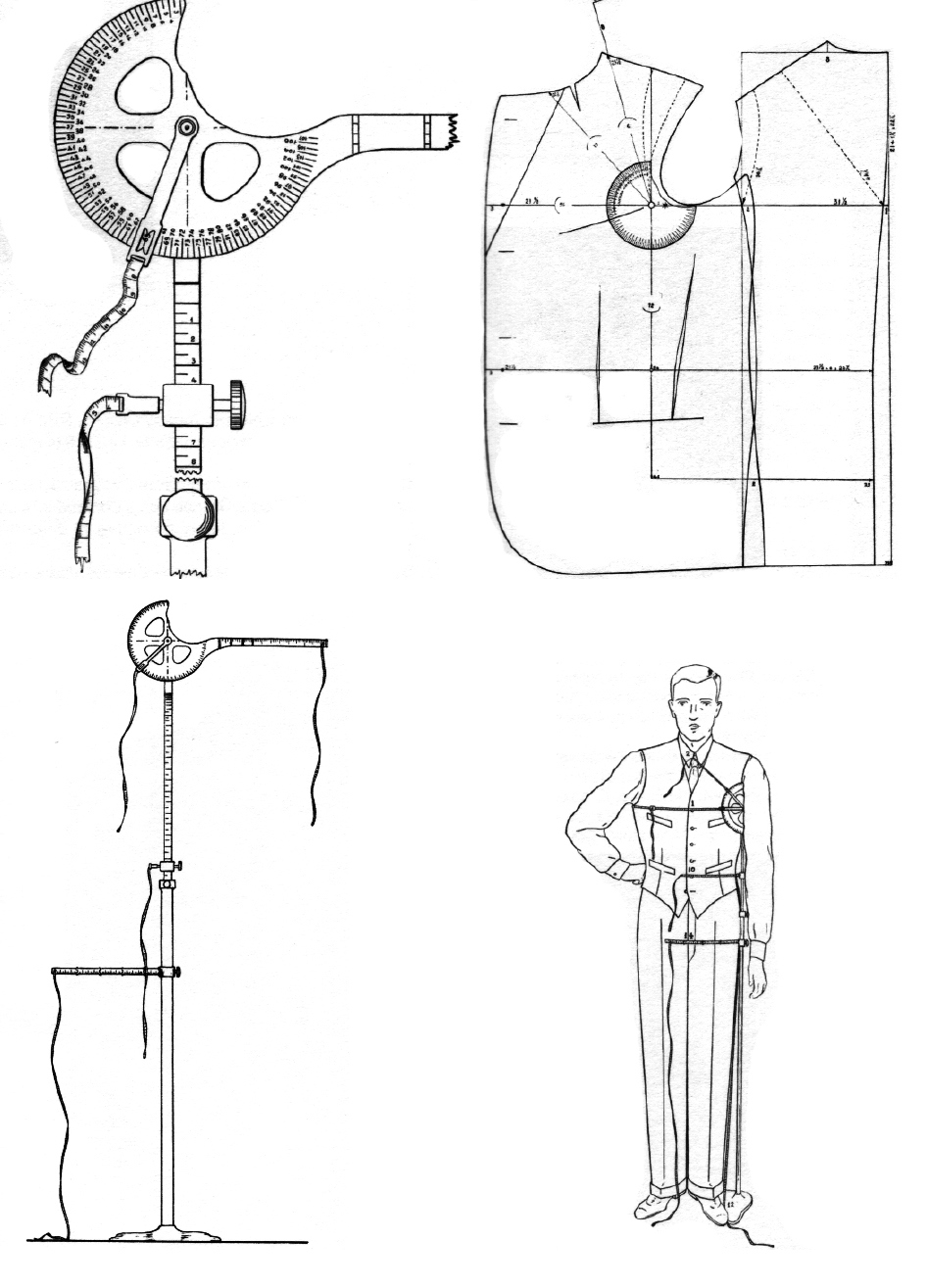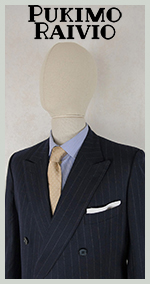A history of unstructured jackets
0August 5, 2014 by Ville Raivio
Sometimes a name really is an omen. Unstructured jackets, as the term implies, are odd jackets, suit jackets or top-layer jackets from which the shape-forming canvas and shoulder padding have been removed. Softness has many forms and definitions are difficult. Some jackets, you see, have a thin linen chest canvas and a touch of wadding to even out the shoulders, while others have full lining, certain jackets are self-lined and the softest of all won’t even have sleeve lining. This last option can also be named a shirt jacket as it is made like a smart shirt, but usually crafted with jacket details and from cloth to be worn above a shirt.
Products from Pukimo Raivio
Ralph Lauren, Black Label suit, size 52EU
 The Italian job in shirt jacket form
The Italian job in shirt jacket form
A history of unstructured jackets travels as influences from London to Rome, and from there onwards to Naples. The Roman master tailor Domenico Caraceni published his philosophy of style as an essay in 1933: Orientamenti nuovi nella tecnica e nell’arte del sarto was a noteworthy tome in the hands of contemporary Italian tailors. Caraceni had studied the cuts and constructions of Savile Row tailors from the jackets his customers had left him for alterations. At this time, one of his pupils was a certain Vincenzo Attolini, who was most impressed by the master’s Ethos of light structure. Later on, the Neapolitan designer Gennaro Rubinacci hired Attolini to his atelier, where this bright young thing softened the Roman jackets further and created the unstructured jacket in the ’30s.
Illustrations from the Caraceni essay
The soft jacket gained its greatest torchbearer in the Duke of Windsor. According to style historian Farid Chenoune, he was among the first men to wear tweed jackets without lining or canvas in the 1930s. Structureless jackets were introduced for the large audience by Giorgio Armani, who created the fashion house bearing his name with Sergio Galeotti in 1975. In July the same year, Giorgio Armani S.p.A. introduced a lining-less, unstructured men’s jacket that created no artificial shapes but gained its look from the wearer’s body. This was a revolution in an age when men’s jackets were stiff, padded and exaggerated in cut. As proof are the countless family albums lined with awkward pictures of the reader’s kin in ’70s garb. In November 1975, this Italian maverick followed suit with his unstructured jackets for women, crafted from men’s suitings — and Armani had arrived.
 Soft and easy does it: Loro Piana’s Storm System cotton
Soft and easy does it: Loro Piana’s Storm System cotton
As the structures bringing shape are minimal or entirely gone, the unstructured jacket must be cut close to the body. Inner seams are visible and most makers pay close attention to their finishing, and this slows down any atelier or factory. These jackets gain their form from the wearer’s body and curve in tandem with muscles or lard, and won’t be optimal for the man without posture. Soft jackets look more rounded and softer than their padded cousins, so the unstructured jacket is always less formal and lighter, best in hot climates and leisure settings. Heavyweight occasions call for structure, though Naples does have a style of its own. Lightness sets great demands for the jacket’s cloth, which must drape cleanly withoutinner support. As granted, the Italians are masters of the soft cloth and coat. Lightness guarantees comfort.
Category Italian Style, Jackets | Tags:




Leave a Reply